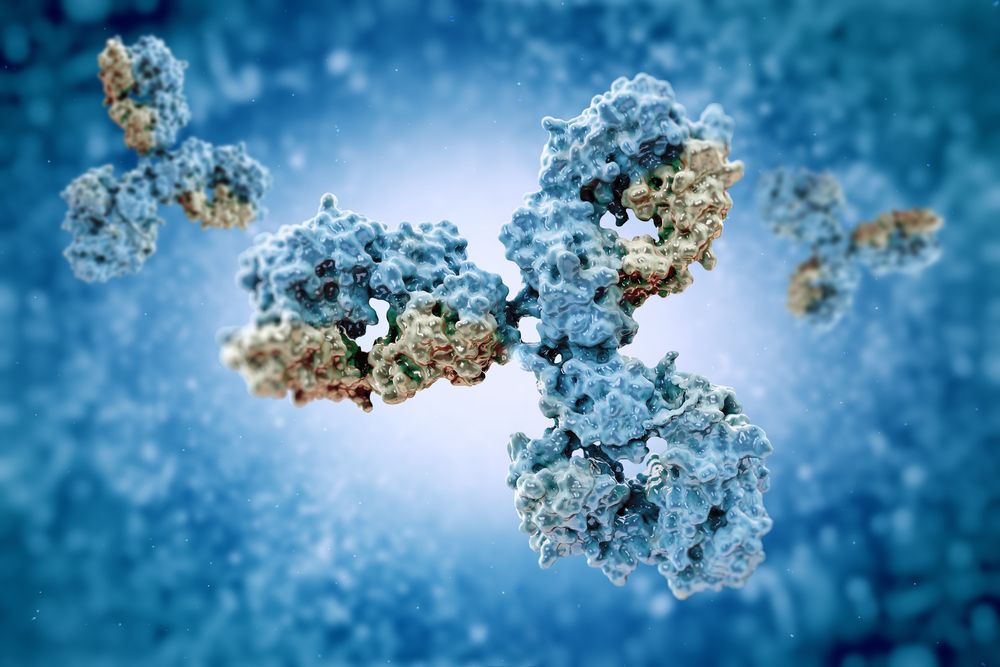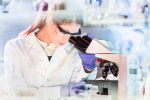IgA EBA Much Different From Linear IgA Bullous Dermatosis
Written by |

vitstudio/Shutterstock virus, antibody, immune system
IgA epidermolysis bullosa acquisita (EBA) differs significantly from another skin condition known as linear IgA bullous dermatosis (LABD), and should be considered a separate disease, a German study suggests.
In addition, the research highlights the importance of identifying the exact autoantigen, or targeted protein, in each condition, so that adequate diagnosis and treatment can be provided.
The study, “Evaluation and Comparison of Clinical and Laboratory Characterstics of Patients With IgA Epidermolysis Bullosa Acquisita, Linear IgA Bullous Dermatosis, and IgG Epidermolysis Bullosa Acquisita,” was published in the journal JAMA Dermatology.
Pemphigoid diseases (PD) are a group of autoimmune conditions in which autoantibodies attack the structural proteins of the skin and cause blisters. PDs are classified as linear IgA bullous dermatosis (LABD) or linear IgA disease (LAD) when immunoglobulin A — IgA — autoantibodies are implicated.
In LABD, these autoantibodies can target proteins such as BP180 and type VII collagen (COL7). However, COL7 also is a known autoantigen in epidermolysis bullosa acquisita, a type of PD. Due to this overlap, IgA-mediated LABD targeting COL7 previously was proposed to be classified as IgA EBA.
According to the researchers, only 90 cases of IgA EBA have been reported in the literature and very little is known about its clinical features, treatment responses, and prevalence.
In an attempt to clarify these issues, a team from the University of Lübeck, in Germany, studied the frequency of IgA EBA in comparison to that of LABD and EBA driven by autoantibodies known as IgG. In addition, the clinical characteristics of four patients diagnosed with IgA were assessed, as well as their treatment responses.
Data were pulled on patients diagnosed with one of these three conditions from October 2010 50 July 2019 from the database of the autoimmune diagnostic laboratory of the University of Lübeck.
The database search returned 300 cases. Among the 300 patients, 21 had IgA EBA (12 females, nine males), 222 had LABD (111 females, 106 males), and 57 were IgG EBA cases (29 females, 28 males). As a result, IgA EBA cases counted for almost 9% of the IgA-mediated cases of PDs and 27% of cases of EBA.
“Because of the presumed rarity of IgA EBA, we did not anticipate the finding that 8.6% of IgA-mediated PD cases diagnosed in our autoimmune diagnostic laboratory over 9 years produced autoantibodies solely to COL7, the autoantigen of EBA, thus, revealing that IgA EBA is distinctly more common than previously believed,” the team wrote.
The median age at diagnosis was 64 years for IgA EBA and 56 for IgG EBA. Patients with LAPD (median age, 70) were significantly older compared with those with IgG EBA.
Next, the team analyzed the clinical courses of four patients, two women and two men — ages 46 to 71 years — who were diagnosed with IgA EBA between October 2015 and January 2018.
The clinical features of the four cases were varied and differed from features of LABD. Among the clinical signs were partially hemorrhagic (bleeding) blisters, wounds on the feet, knees and fingers, and damaged papules, or small bumps on the skin. All four patients had skin lesions in the upper and lower extremities, with the trunk affected in one case. All four also had multiple co-existing conditions and two had a history of cancer.
The four patients with IgA EBA were treated initially with the anti-infective medicine dapsone, but only one achieved remission, as would be expected in LABD. The other three patients were treated with medications such as the steroid dexamethasone, the biological therapy rituximab, and/or intravenous immunoglobulins — common in autoimmune conditions — before reaching partial clinical remission.
“Overall, the findings of this cohort study and small case series suggest that IgA EBA may be more common than expected and may require more intensive systemic treatment than LABD, suggesting it should be considered a separate disease entity,” the scientists concluded.
However, the researchers noted that the analysis, carried out in a single institution, was a clear limitation of the study, and the profiling of the treatment course was based on only four patients.






